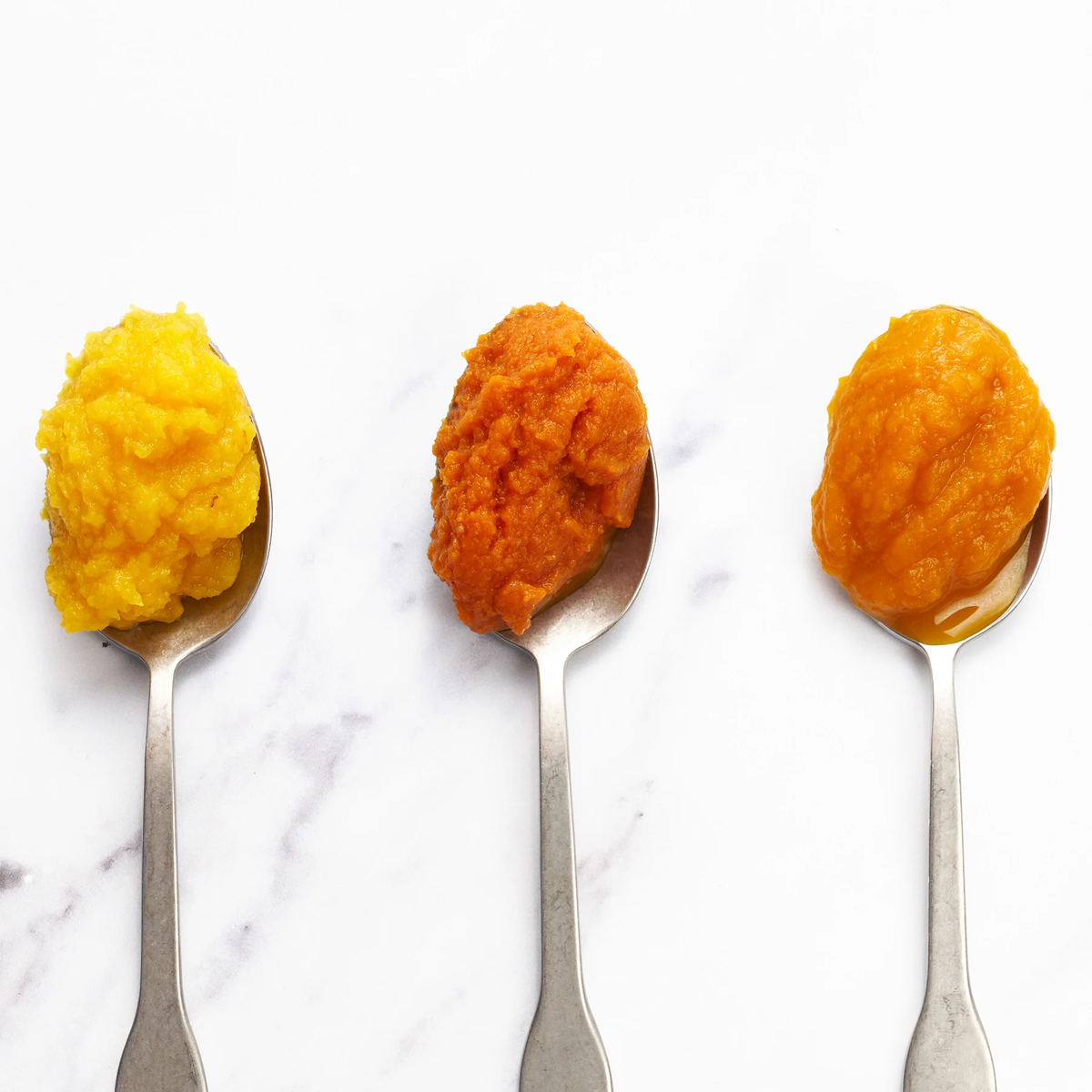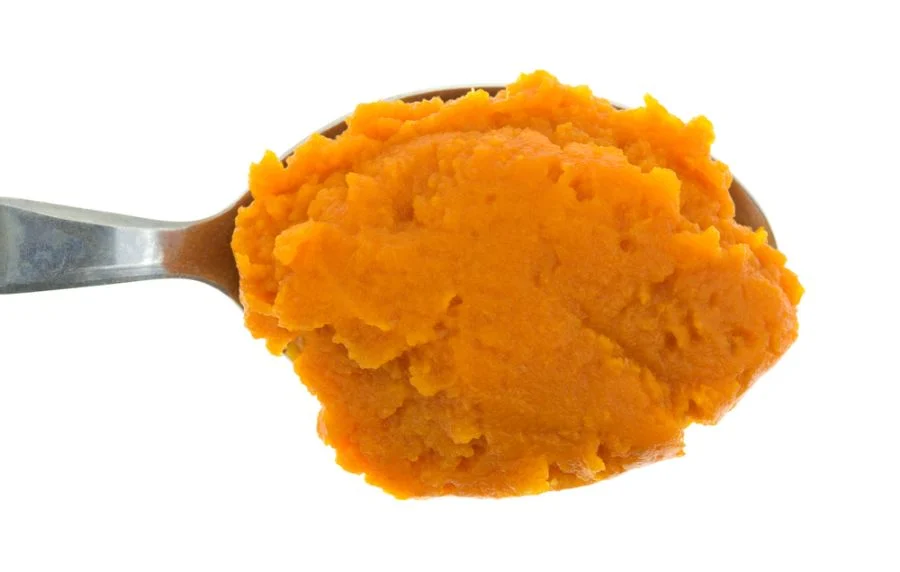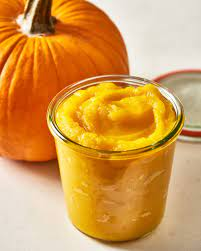Can you eat canned pumpkin right out of the can?
Canned pumpkin is a product made from cooked and pureed pumpkin flesh that is then canned for preservation. While raw pumpkin can be eaten, canned pumpkin is processed and ready-to-use. The pumpkin used for canned pumpkin can come from several types of pumpkin, including Dickinson squash, which is a type of winter squash that is small and sweet with a pale orange flesh. The squash is often used to make canned pumpkin puree, although other types of winter squashes can also be used.

Despite its name, canned pumpkin can sometimes be made from other types of squash, which can lead to confusion over what can be classified as pumpkin or squash. According to the FDA, canned pumpkin is defined as “mature, sound, golden-fleshed, sweet squash that are firm, dry and smooth.” This definition can be applied to other types of winter squash, such as butternut squash, which are then labeled as canned pumpkin.
While this classification can be confusing for consumers, it is important to note that all canned pumpkin products, whether made from pumpkin or squash, are held to the same strict regulations for safety and quality. The FDA has set standards for canned pumpkin and squash products, including required levels of moisture, pH, and microbial safety.
In summary, canned pumpkin is a processed product made from cooked and pureed pumpkin flesh that is then canned for preservation. While it can be made from different types of pumpkin and squash, all canned pumpkin products are held to the same strict standards for safety and quality.
Eating Canned Pumpkin vs. Raw Pumpkin
Canned pumpkin and raw pumpkin both have their own unique qualities and uses in the kitchen. While canned pumpkin is convenient and readily available, raw pumpkin can offer a fresher taste and can be used for various dishes. In this article, we will explore the differences between canned pumpkin and raw pumpkin and discuss whether it is safe and healthy to eat canned pumpkin right out of the can.
Can You Eat Canned Pumpkin Right Out of the Can?
Canned pumpkin is a popular ingredient in many recipes, especially during the fall season. But is it safe to eat right out of the can?
While canned pumpkin is technically cooked during the canning process, it is not intended to be consumed directly from the can. Eating canned pumpkin right out of the can may not be safe and is not recommended.
The canning process involves processing the pumpkin at high temperatures to kill any harmful bacteria that may be present. However, the pumpkin is not sterilized, and there is still a risk of contamination. Additionally, canned pumpkin may contain preservatives, which are not intended for consumption in large quantities.
Consuming raw pumpkin straight from the can may also have an adverse effect on one’s digestive system. The pumpkin may still contain enzymes that can cause indigestion or other digestive problems.
Furthermore, the nutritional content of canned pumpkin may be affected by the canning process. While the canning process can help preserve the pumpkin’s nutrients, it can also result in a loss of some vitamins and minerals. For this reason, it is always advisable to cook canned pumpkin before consuming it.
In summary, while canned pumpkin is a convenient ingredient to use in many recipes, it is not safe to eat right out of the can. Eating raw pumpkin straight from the can may pose risks to health and digestion. It is always best to cook canned pumpkin before consuming it to ensure safety and maximize its nutritional content.
Pros of Eating Canned Pumpkin
Canned pumpkin is a highly nutritious and versatile food that can be found year-round in grocery stores. Contrary to popular belief, it is just as nutritious as fresh pumpkin and offers a multitude of health benefits.

One of the significant benefits of consuming canned pumpkin is its potential to aid in the management of depression. It is an excellent source of tryptophan, an amino acid that serves as a precursor to serotonin, the brain chemical that controls mood, appetite, and sleep. By increasing serotonin levels in the brain, tryptophan can help alleviate feelings of sadness and depression.
Canned pumpkin is also great for liver health. It contains high levels of antioxidants, including beta-carotene and vitamin C, which help protect liver cells from damage caused by free radicals. Additionally, canned pumpkin is an excellent source of fiber, which can help prevent or treat non-alcoholic fatty liver disease (NAFLD).
For individuals with diabetes, canned pumpkin can be a beneficial addition to their diet. It is low in sugar and high in fiber, which can help regulate blood sugar levels and improve insulin sensitivity. Additionally, the antioxidants found in canned pumpkin may help prevent diabetic complications by reducing the inflammation caused by high blood sugar levels.
In addition to its potential to treat liver problems and diabetes, canned pumpkin has properties that may aid in cancer prevention. Its high beta-carotene content has been found to reduce the risk of several types of cancer, including lung, prostate, and breast cancer. Furthermore, canned pumpkin contains melatonin, a hormone that has been shown to inhibit the growth of cancer cells.
Canned pumpkin also has anti-inflammatory and anti-microbial properties that can help protect the body from chronic diseases. Its antioxidant content can help reduce inflammation, while its anti-microbial properties can help fight infection-causing bacteria and viruses.
Finally, pumpkin seeds, which are often found in canned pumpkin, offer additional health benefits. They are an excellent source of magnesium and other essential minerals, which can help ease menopausal symptoms and lower blood pressure.
Overall, canned pumpkin is a nutritious and versatile food that offers numerous health benefits. Its year-round availability and ease of use make it an ideal addition to any diet.
Cons of Eating Canned Pumpkin
While canned pumpkin does offer numerous health benefits, it’s important to be aware of the potential downsides to using this ingredient. Here we outline the cons of eating canned pumpkin:
1. Overcooked Skin: Canned pumpkin may have a slightly lower nutritional content compared to fresh pumpkin as the skin may have been overcooked during the canning process. This overcooking could result in a loss of nutrients, particularly vitamin C.
2. Altered Taste and Texture: Canned pumpkin may have a slightly different taste and texture compared to fresh pumpkin, which may not be as desirable for some recipes.
3. Additives: Canned pumpkin may contain additives like salt or sugar, which can increase the overall calorie count and sodium intake. It’s important to read the label carefully before purchasing canned pumpkin.
4. BPA Exposure: Many cans are lined with the chemical Bisphenol A (BPA), which has been linked to numerous chronic diseases. While the BPA content in canned pumpkins is typically low, it’s best to try and opt for cans that are BPA-free.
To mitigate these cons, you can try to use fresh pumpkin instead of canned pumpkin when possible. This will ensure that you are getting the maximum nutritional value from the fruit. Additionally, be sure to check the label carefully if you do decide to use canned pumpkin, so you can choose one with minimal additives and low BPA content.
In summary, while there are some cons to eating canned pumpkin, these can be mitigated by reading labels carefully, opting for fresh pumpkin when possible, and being mindful of additives and BPA exposure.
Is It Safe to Eat Canned Pumpkin Right Out of the Can?
If you’re a fan of pumpkin, you might be wondering if it’s safe to eat canned pumpkin right out of the can. The short answer is yes, it is safe to eat canned pumpkin without any extra cooking.
Canned pumpkin is already precooked and processed during the canning process. That means it’s ready-to-eat and you can enjoy it right out of the can. However, if you want to achieve optimal taste, it’s best to incorporate it into your favorite recipes.
You can use canned pumpkin in many sweet or savory recipes such as pumpkin pie, pumpkin bread, or pumpkin soup. This will enhance the flavor and texture of your dish and provide you with a delicious and nutritious meal.
It’s important to note that some brands may add sugar or other flavorings to canned pumpkin. In that case, it’s best to check labels before consuming it directly from the can. This will help you to ensure that you’re consuming a product that meets your dietary preferences and needs.

In conclusion, canned pumpkin is safe to eat directly from the can, but for optimal taste and flavor, it’s best to incorporate it into your recipes. Keep in mind that checking the label can ensure you’re choosing a product that fits your dietary needs.